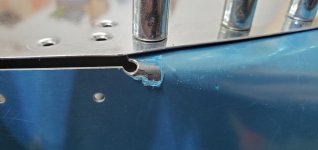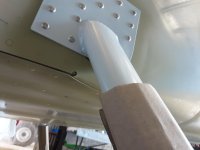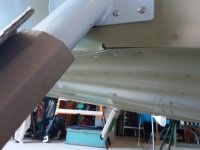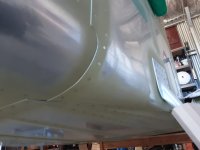Welp, I managed to create cracks while making the curve in the -9A fuselage side skins (where the side skins bend to match the center section bottom skin and tail cone). I think I just overworked the aluminum while I was trying to get the curves right. One side has a 1/16" crack and the other side has a 1/4" crack. I know this is an all too common occurrence based on what I've read. My question - do I just stop drill the cracks and leave them as-is, or is it better to actually file away the entire crack by making a much larger cutout? What is the proper size hole for stop drilling?
(The pictures make the relief hole look rougher than it actually was - it was deburred and smooth prior to the bend. This is as I was starting to clean things up with a file.)
(The pictures make the relief hole look rougher than it actually was - it was deburred and smooth prior to the bend. This is as I was starting to clean things up with a file.)
Attachments
Last edited:








